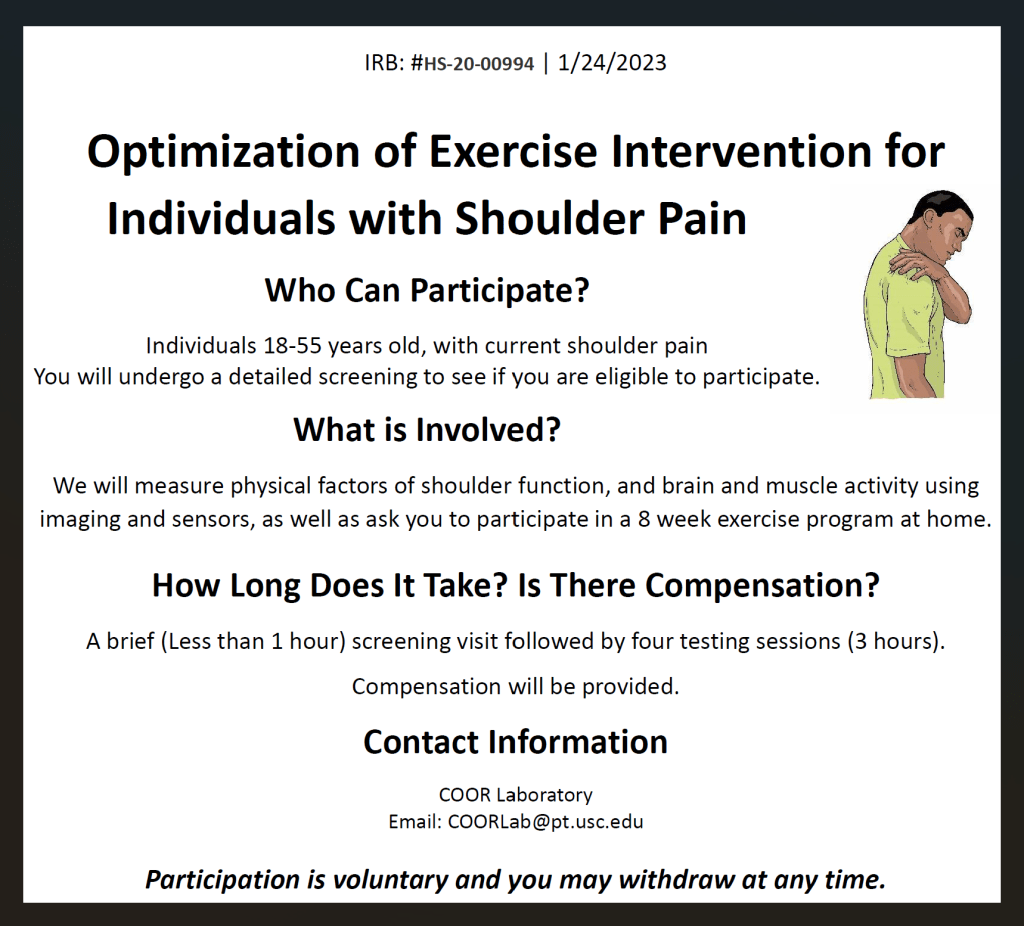Welcome to the Clinical Biomechanics Orthopedic and Sports Outcomes Research (COOR) Lab
The COOR lab aims to define patient-specific mechanistic factors related to the development and persistence of recurrent and chronic shoulder and elbow pain. We study those who participate in overhead sports (baseball), those with sustained shoulder loading related to work and sports activities, and patients with musculoskeletal shoulder pain. Identifying patient-specific factors contributing to the presence and development of upper extremity pain, as well as those factors related to optimal sports and work performance are leveraged to develop effective intervention strategies to optimize function and return to activities. For patients with shoulder pain related to rotator cuff tendinopathy, we study the intersection between tendon structure, neuromuscular control, central (brain) activity, and psychological mechanisms associated with pain and disability to inform the design of interventions to optimize patient and athlete functional outcomes. We also conduct clinical trials, studying the effects of interventions for patients with musculoskeletal shoulder pain.
Do you have shoulder pain?
We are recruiting individuals with shoulder pain for our clinical exercise study!
See Current Projects “Optimization of Therapeutic Resistance Exercise for Shoulder Pain” and our Exercise Study details!

The overarching goal of the COOR Lab is to optimize treatment outcomes for patients with shoulder disorders. We study diagnostic classifications and mechanisms of shoulder disorders using biomechanics, neuroimaging, and functional assessments. We leverage our understanding to design and assess innovative rehabilitation interventions to improve shoulder pain and restore the ability to perform social, work and sports activities. We also focus on understanding shoulder and elbow movement in overhead athletes to optimize performance and injury prevention Our goal is to maximize patient outcomes for musculoskeletal shoulder disorders, and optimize performance in overhead athletes to promote return to work, daily activities, and full sport participation.
